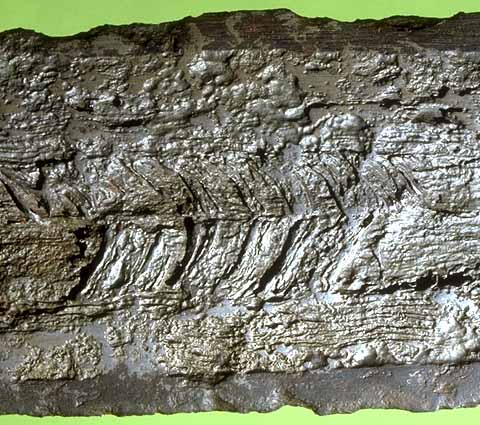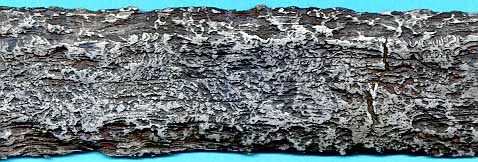G
Genn21
Guest
Well i always thought the dragon slayer was just made of a hell of a fine large block of refined steel proccesed from iron by godo. Yet giveing godo's skills as one of the most gifted smiths in the berserk world i think he may have folded they steel to give the dragon slayer a damascus build.. or mokume whatever metalurgy your throw at this. Normal damascus has a etched look to it which i started to notice across the dragonslayers broad side the 3 inch surface between the edges. It looks like Miura was trying to animate it like it was damascus steel.
damask steel
n : a hard resilient steel often decorated and used for sword blades
Damascus iron, or Damascus twist, metal formed of thin bars or wires of iron and steel elaborately twisted and welded together; used for making gun barrels, etc., of high quality, in which the surface, when polished and acted upon by acid, has a damask appearance.
Damascus; refers to a material which is made by the process of pattern welding. Basically what it amounts to is to laminate alternating layers of carbon steel and either wrought iron or mild steel or even pure nickel. This kind of steel is made by forge welding the various layers together then folding the forged billet over and repeating the process. By using simple multiplication, one can quickly see that after 16 folds you get approximately 65,000 layers of steel.
Pattern Weld; is a forge weld of two or more kinds of steel including a high carbon steel (assuming that we are making knives here...). Once the forge welds are complete and we have the proper amount of layers we can impart various mechanical deformations to the billet of steel thus displacing the layers. This will occur naturally during the forge welding process and the layer building folds from the impact of the hammer on the steel. However, very interresting patterns can be created by drilling holes, hitting the surface of the billet with cold chisels, twisting the metal and inlaying other metals into the billet. Actually, there is no limit to the patterning which can be created, it is basically always being improved upon by knifemakers in order to get that ultra artistic design. The layers of steel become apparent in the blade blank once it has been ground to shape, heat treated, polished and etched in an acid solution. The Etching is basically what makes the design visible.



You be the judge on this. Is godo skilled enough to make damascus blades. Swords once crafted by ancient japanese smiths once used the same process to make ultra strong wepaon's. Do you think godo could be doing the same ? Could this man have made the D.S out of such a extrodinary material ?
damask steel
n : a hard resilient steel often decorated and used for sword blades
Damascus iron, or Damascus twist, metal formed of thin bars or wires of iron and steel elaborately twisted and welded together; used for making gun barrels, etc., of high quality, in which the surface, when polished and acted upon by acid, has a damask appearance.
Damascus; refers to a material which is made by the process of pattern welding. Basically what it amounts to is to laminate alternating layers of carbon steel and either wrought iron or mild steel or even pure nickel. This kind of steel is made by forge welding the various layers together then folding the forged billet over and repeating the process. By using simple multiplication, one can quickly see that after 16 folds you get approximately 65,000 layers of steel.
Pattern Weld; is a forge weld of two or more kinds of steel including a high carbon steel (assuming that we are making knives here...). Once the forge welds are complete and we have the proper amount of layers we can impart various mechanical deformations to the billet of steel thus displacing the layers. This will occur naturally during the forge welding process and the layer building folds from the impact of the hammer on the steel. However, very interresting patterns can be created by drilling holes, hitting the surface of the billet with cold chisels, twisting the metal and inlaying other metals into the billet. Actually, there is no limit to the patterning which can be created, it is basically always being improved upon by knifemakers in order to get that ultra artistic design. The layers of steel become apparent in the blade blank once it has been ground to shape, heat treated, polished and etched in an acid solution. The Etching is basically what makes the design visible.



You be the judge on this. Is godo skilled enough to make damascus blades. Swords once crafted by ancient japanese smiths once used the same process to make ultra strong wepaon's. Do you think godo could be doing the same ? Could this man have made the D.S out of such a extrodinary material ?

